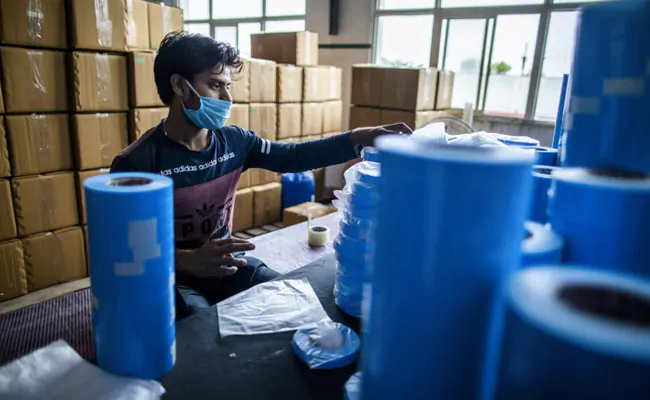India To See ‘K-Shaped’ Recovery As Demand Hit, Says Ex-RBI Head

[ad_1]
The Indian economy’s recovery is likely to be shaped like a K rather than a V, as rising inequality is poised to hit consumption and growth prospects, the country’s former central bank governor said.
“An important consequence of the pandemic has been the sharpening of inequalities,” Duvvuri Subbarao said in an April 9 interview. “Growing inequalities are not just a moral issue. They can erode consumption and hurt our long-term growth prospects.”
India’s gross domestic product is forecast to grow by as much as 12.5% in the fiscal year that began April 1, which would make it the world’s fastest growing major economy. While that prediction followed a string of fiscal and monetary steps that stoked economic activity once pandemic curbs were eased, a new surge in Covid-19 cases has raised fears that any potential new restrictions could cripple an economy that relies on domestic consumption.
On Monday, economists at Nomura Holdings Inc. downgraded their forecasts amid the second wave of virus cases. They cut India’s GDP estimate for 2021 to 11.5% growth, from an earlier forecast of 12.4%.
This time around policy makers will have limited options, said Subbarao, who helmed the Reserve Bank of India during the global financial crisis, for five years beginning from September 2008. While worries about ballooning public debt may could restrict fiscal support, concerns about inflation could keep the central bank from cutting interest rates, he said.
These limitations could drag on the recovery, with a K shape representing an uneven rebound compared to a V shape that suggests a quick return to growth.
Rising inequalities are “particularly painful” for a low-income country like India, where upper segments of the population have seen their wealth rise while lower sections have lost jobs, incomes, savings and purchasing power, Subbarao said.
About 122 million people — mostly daily wage earners and those employed by small businesses — lost their jobs to one of the world’s strictest lockdowns around this time last year. Now, new localized lockdowns by Indian states are pushing the unemployment rate higher.
Subbarao, who holds a masters degree in economics from Ohio State University and was a Humphrey Fellow at the Massachusetts Institute of Technology, said that despite double-digit growth forecasts from the International Monetary Fund and RBI, India’s economy would be worse off than it was before the pandemic.
Here are more key points from the interview:
- On RBI’s pledge to buy as much as 1 trillion rupees (about $13.3 billion) of sovereign notes through the G-Sec Acquisition Program this quarter, Subbarao said: “From supporting growth, to ensuring price stability, to financial stability, to yield-curve management and lastly protecting savers in India who are grappling with negative real rates on their deposits, the RBI needs a separate instrument for each objective. The G-SAP can be interpreted as an instrument for yield-curve management”
- He called privatization of state-run banks the “right decision.” Instead of using scarce budgetary resources to recapitalize government-controlled lenders, it’s better to use that money where it will be more productive, he said
- While it’s good to build foreign-exchange reserves, Subbarao said, the RBI should take care that the costs don’t outweigh the benefits
[ad_2]
Source link

